When thinking about Athens, the rich history, culture, and picturesque travel brochures come to mind first. However, among the ancient ruins scattered around the city, Athens has a plethora of hip, one-of-a-kind spots that cater to the unique lifestyle and culture of the Mediterranean. A quaint gallery-tattoo parlor, bars with designated gallery spaces for pop-ups, and a modern “white cube” museum played host to various events taking place during the 2018 edition of Athens Jewelry Week (AJW). The takeover of the city by jewelry was an absolutely wonderful experience to be part of, and the energy generated from the event could be felt all over Athens. Posters advertising AJW18 were plastered everywhere, and the appreciation for art (visible through the vast amounts of graffiti all over the city) was apparent from the moment I stepped off my plane at the airport.

Athens Jewelry Week 18 just completed its third year of offering a series of showing opportunities to artists from all over the world. The event, organized by Erato Kouloubi, Niki Stylianou, and Anastasia Kandaraki (founding members of the organization [anti]clastics), aims to foster an international dialogue and “present to the wider public the specifics, diversity, and artistic dimension of contemporary jewelry in Greece.”[1] The Benaki Museum functioned as the main event space, hosting the opening for the overall week-long event, as well as acting as the central hub for various events taking place over the course of that week, from workshops and seminars to the awards/closing ceremonies.
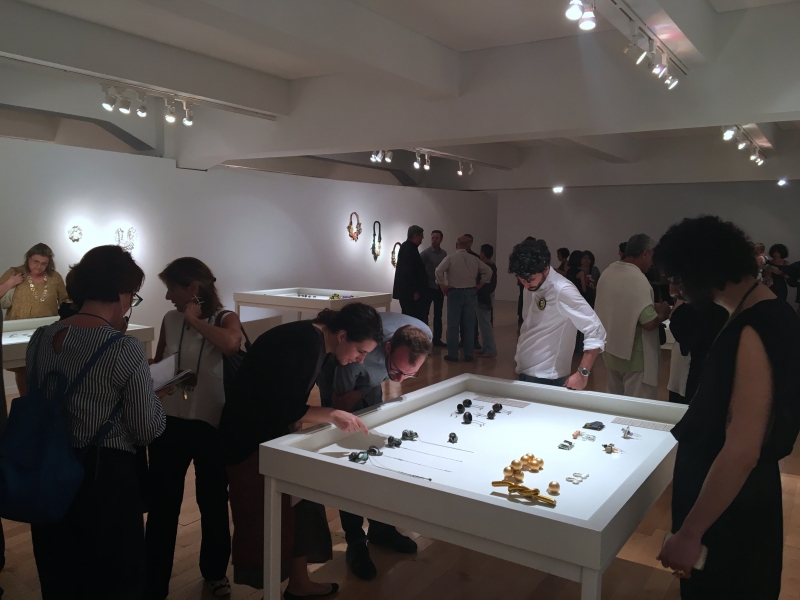
The museum also played host to the central exhibitions, which included the juried exhibition Intersecting Spaces; the featured award artists from previous years: Snem Yildirim, Orsolya Losonczy, and Hao-Han Jhang; guest artist Maria Militsi; and invited artists Matt Lambert and the Italian contemporary jewelry school Alchimia.
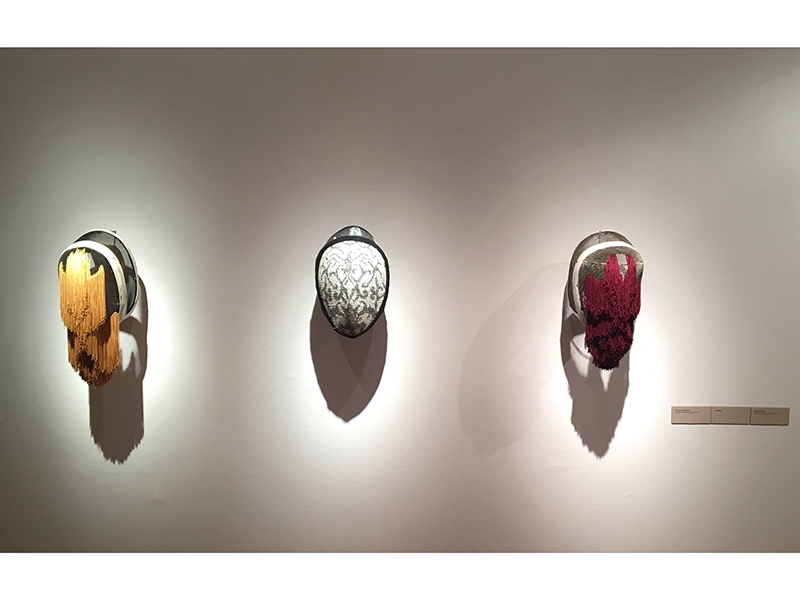
As visitors walked into the Benaki, they were greeted with the featured work of Snem Yildirim, a maker from Turkey who won the AJW Award last year. The work presented in the show was eye catching and passionate. Yildirim’s Mein Lieber Diktator series draws viewers in to observe the holographic changes that occur in each of the four brooches, depending on the angle and location of observation.
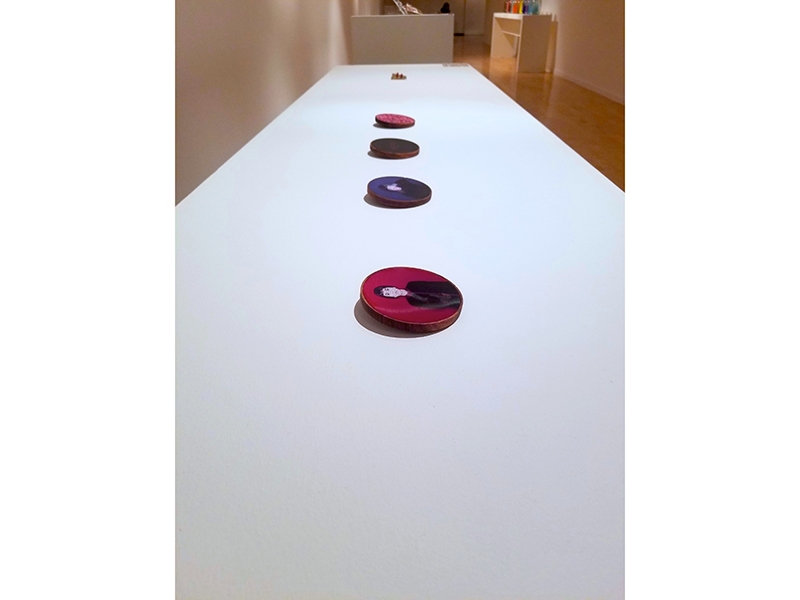
These works are unique in how they approach the topics of oppression, tensions in our current political climates, and looming censorship issues in Turkey and the rest of the world. The scale of these works is intimate and, through their holographic self-portraits, I was captivated by the interaction they required in order to fully understand the works in their entirety. This performativity between the viewer and brooches subtly set the tone for the week-long experience of Athens Jewelry Week. Through each of the solo, collaborative, student, and central exhibitions, the theme of creating experiential moments through performance and interaction seemed to be an underlying connection that tied the various events of AJW18 together.
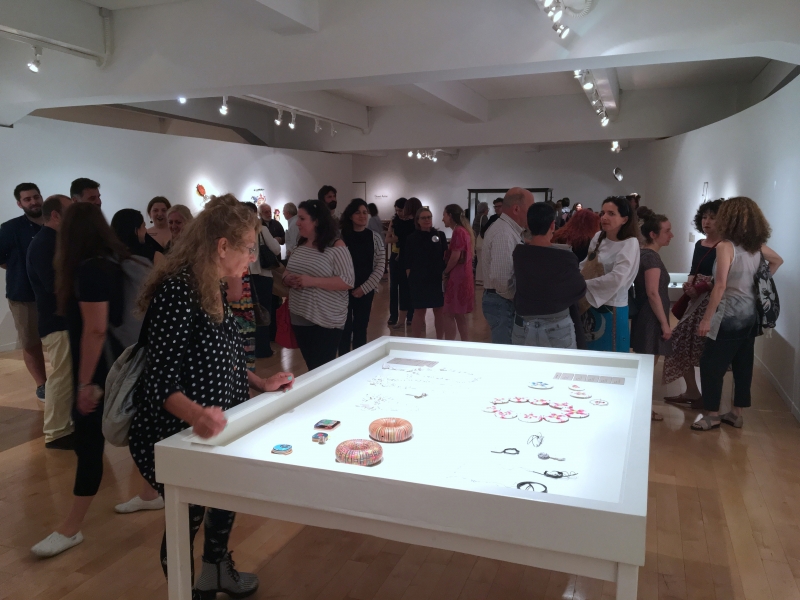
The juried exhibition at the Benaki was a balanced collection of works by 32 participants ranging in a variety of material, conceptual, and aesthetic approaches. The design of the exhibition was clean, and the display was engaging, with a series of white tables almost encasing the work which contrasted with the jewelry and objects suspended from the walls in the open-concept division of the juried exhibition from the award, featured, and invited artist displays.
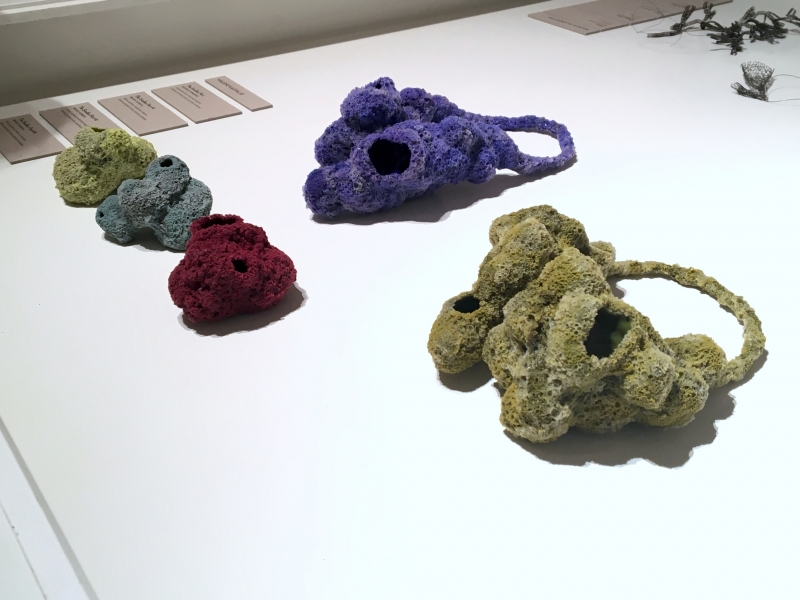
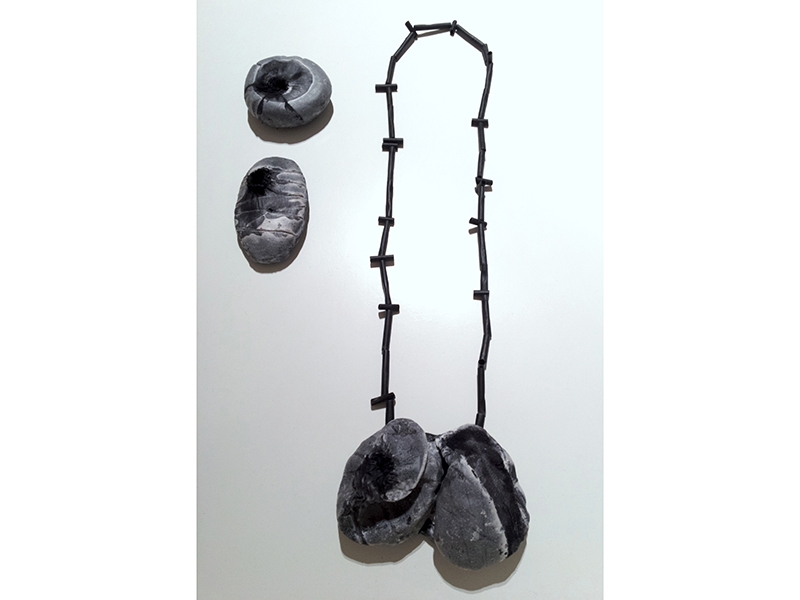
Works that stuck out to me were the organic-shaped and textured pieces by Malene Kastalje (whose works were also in another exhibition, Time Perception Vol.4, curated by the Hatara Project and held at Elisavet Kapogianni Design Studio in downtown Athens). The shell-like collection of brooches and pendant by Elli Xippa captivated the public and jury, resulting in the honor of winning three different awards during the closing ceremony—the AJW18 Public Award, the Alchimia Award, and the Autor Award.
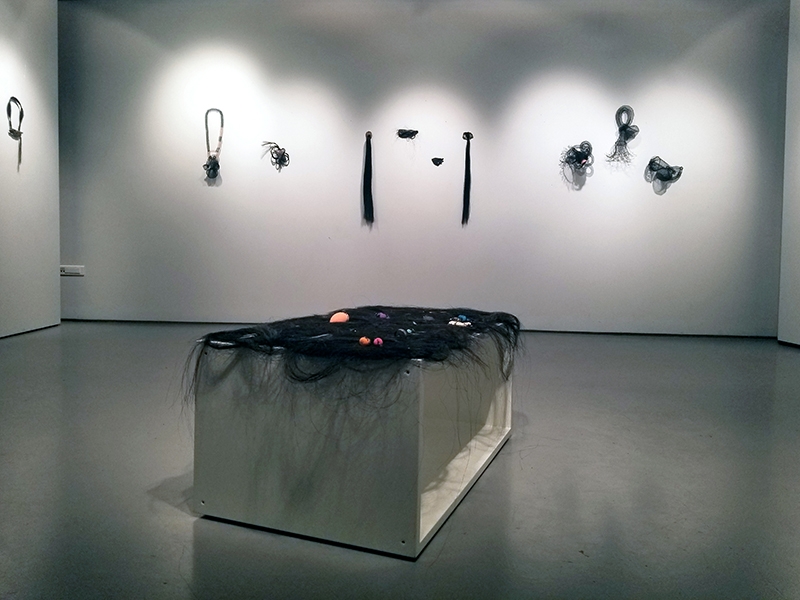
Event attendees traveled around the city visiting different venues to see the individual and group exhibitions. At Melanithros Art Space, Rachel Andrea Davis and I (Melis Agabigum) held our exhibition, What Lies Beneath. The gallery was shared with the Norwegian collective ARKIVET, comprised of artists Camilla Luihn, Elsie-Ann Hochlin, Heidi Sand, Hilde Dramstad, Putte H. Dal, and video artist Tone Myskja. Their exhibition, Beauty Box, was a perfect complement in means of display and content to What Lies Beneath, with both exhibitions overlapping with subtle regards to façade, beauty, relationships, and the discrepancy between truth and personal secrets.

Some of the group and individual exhibitions that most drew my attention perhaps did so because of the urban integration of location versus nontraditional means of showing work. Concepts of relationships through infinite renewal, crossing of paths, and the fragility of relationships were explored in the exhibition Who Can Promise Forever?, featuring the work of Corrina Goutos and Jordi Aparicio Manchado. This exhibition was presented at T.A.F./the art foundation, which is located in the heart of Athens, with a hip bar in the courtyard surrounded by a series of small rooms that serve as pop-up exhibition spaces, a gallery, and gallery shop. T.A.F was also a host to Anastasia Gemeliari’s The Sin City Project, and The Friction Story, by Xenia Deimezi. These small, dilapidated rooms gave way for the artists to not only challenge their audiences with their works, but also challenge their audiences with the space used for presentation.

Who Can Promise Forever? was displayed in a small, intimate blue room that had ruinous walls and bright lights reminiscent of the kind used in garage workshops. The works were shown on various planes of the room, ranging from above eye level on the walls to literal corners of connecting walls to resting on paper on the ground. The movement created through display dared viewers to navigate through the exhibition in a manner similar to the flexibility required for navigating through relationships. This performative interaction between viewer and work was also echoed in The Sin City Project and The Friction Story exhibitions.
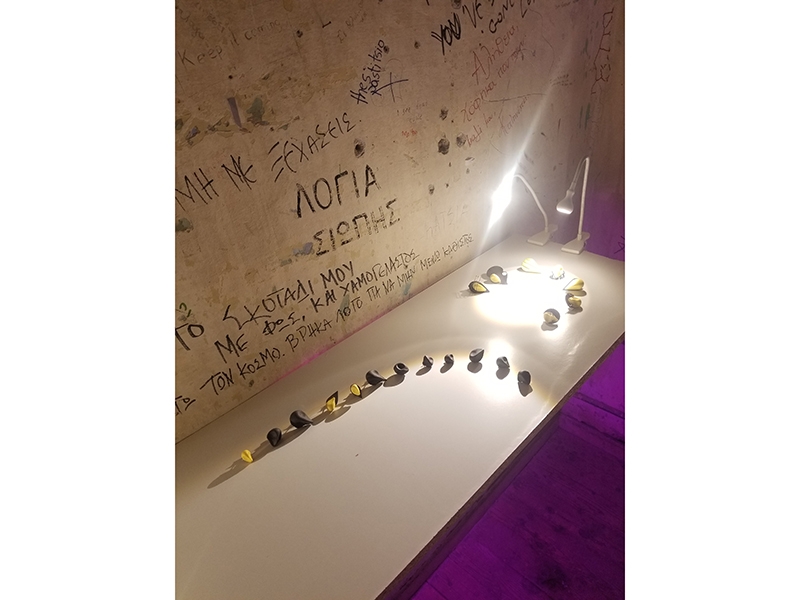
Gemeliari’s solo show, The Sin City Project, was an exploration in communicating various attitudes toward life and the feelings associated with wearing the work. The show, inspired by the noir comic and film Sin City, was backlit by purple fluorescent tube lights and brought forth concepts of light versus dark, good versus evil, and other dichotomies hinting at truth, innocence, and desolation. These were not only reflected in the work, but, again, in the display and location of the exhibition.
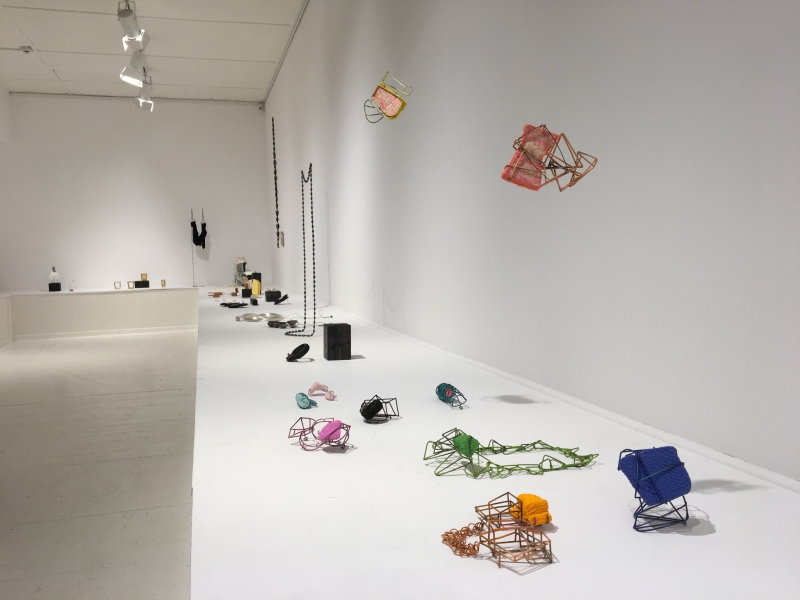
Exhibits like In Da House, a show featuring works from the metal and art jewelry department of Oslo National Academy of Arts, coordinated by Professor Jorge Manilla, and the performance/exhibition Curiosity, by Lodie Kardouss (winner of the Joya Award), were especially memorable. Kardouss’s performance was inspiring and highly conceptual, having taken a little over two years (according to the artist) to conceptualize and refine before making and performing. [2]
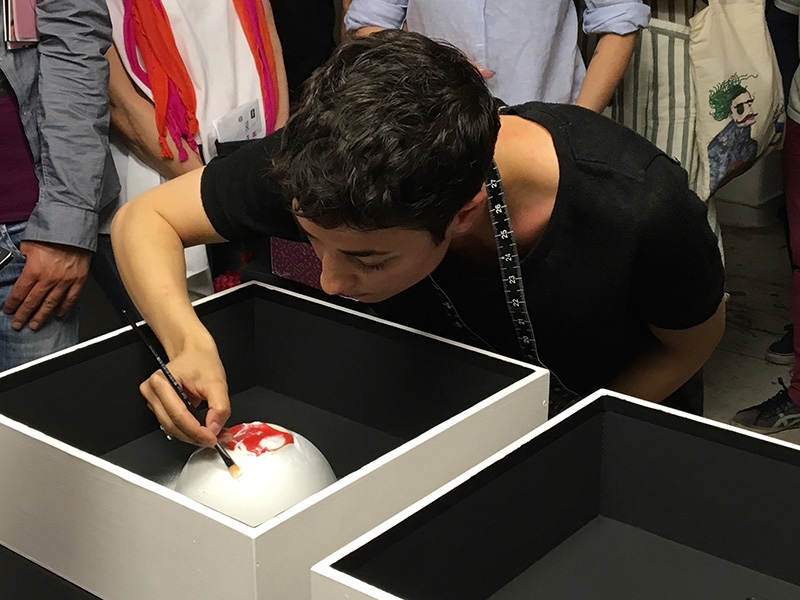
Lodie Kardouss performance of Curiosity #9, video: Lodie Kardouss
The work consisted of framed photographs of the original objects made prior to AJW18. The performance component of the show however, was what grasped viewers’ attention and became a buzz for conversation during the course of the week. Kardouss re-created each piece over the course of two days during scheduled performance times. The methodical and dance-like interactions between the materials and Kardouss create a temporal object that alludes to the presence and absence of an art jewelry object.
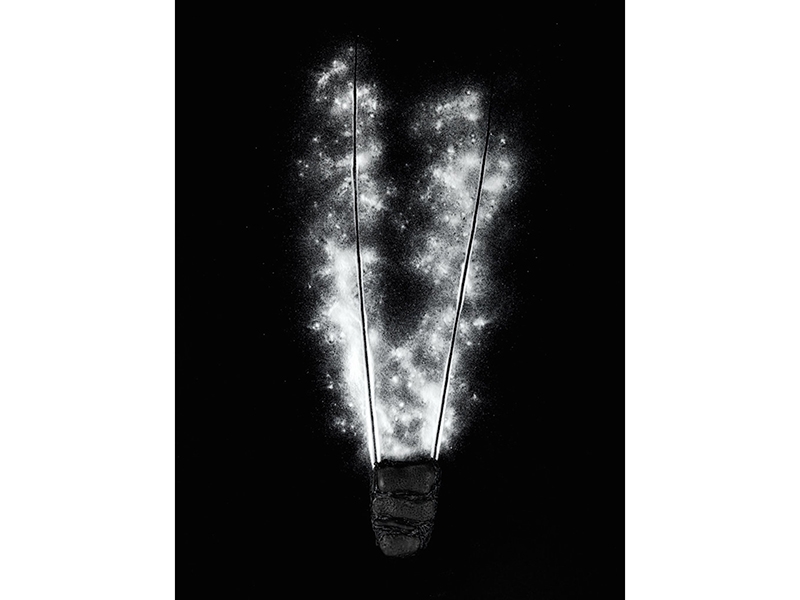
This dissonance and harmony between the nonexistence of physical jewelry, the allusion to the idea of “being present,” and the experience of watching Kardouss re-create through reenacting physical process poses questions about the manifestations of objects, temporality, and the value of experience through recalling memories for observers.
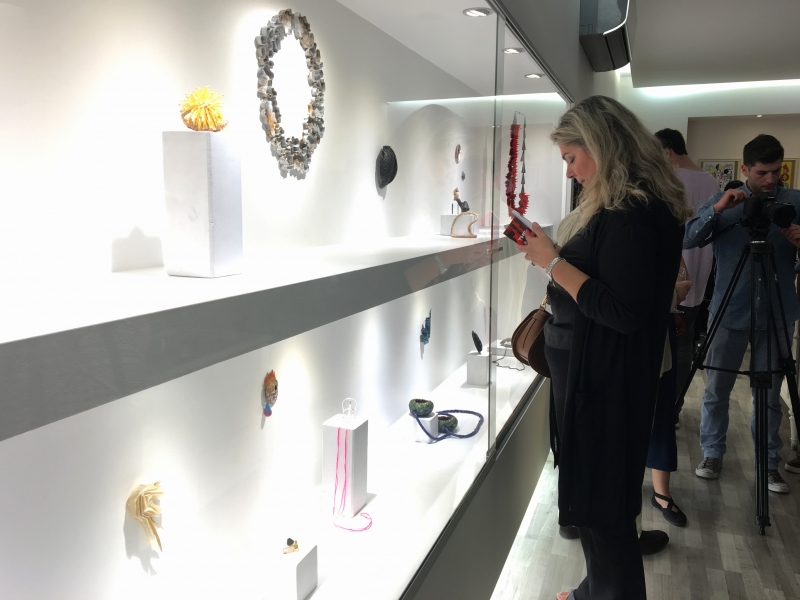
The melding of all aforementioned exhibitions at AJW18 seemed to come together at Erato Kouloubi’s gallery, Popeye Loves Olive Art Space, with The Αfter Joya Effect V. This show was distinctive in that it showcased 27 artists who had participated in the Joya Barcelona Art Jewellery & Objects fair from the previous year. These artists’ works were displayed in a clean format similar to the Benaki Museum’s display for Intersecting Spaces.
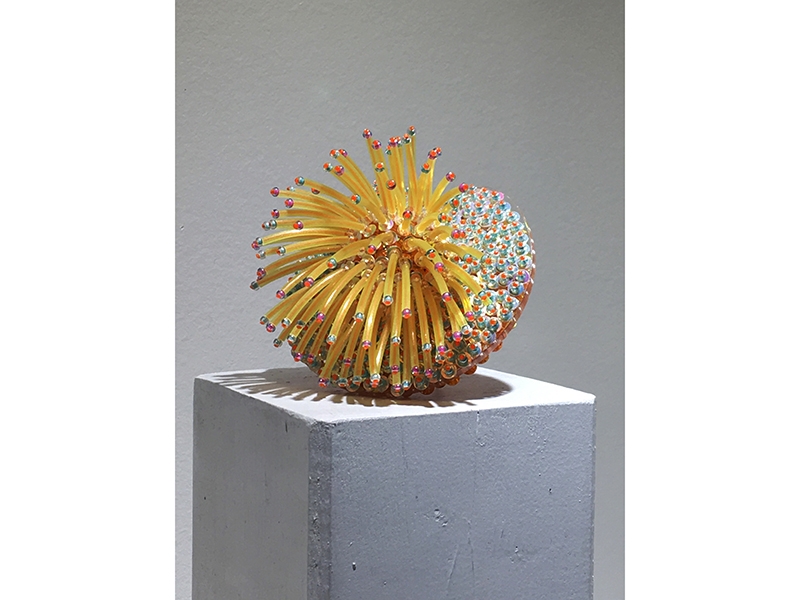
This consistency of bright lights and minimalist white displays highlighted the work without any external distractions. The art space was inviting and lively, with the pacing of the work positively adding to the individual importance and time that each piece asked of its viewers. Parallel to the central exhibition’s public award voting opportunity, The Αfter Joya Effect V also gave gallery attendees a chance to pick their favorite work, with the winner receiving an invitation to have a solo exhibition at Popeye Loves Olive Art Space. This year’s winner was Wanshu Li, who also won the JOYA 2017 Award.
These similarities between The Αfter Joya Effect V and Intersecting Spaces seem to drive home the notion that at the end of the day, jewelry fairs like Joya, Autor, and AJW bring together artists, cultures, and works, and are ultimately a means of connecting the dots between creating experiences through our relationships as artists and connoisseurs of contemporary art jewelry.
[1] anticlastics “goal”, http://athensjewelryweek.com/goal/.
[2] Marietta Kontogianni, journalist and founder of JEWELRYbox magazine, a media sponsor of Athens Jewelry Week.




